Text


[Unfortunately, as of this publication, no one has tried to claim the prize money offered (Figures 1 and 2) in the search for the Smilodon baculum at La Brea. Maybe the most iconic sabertooth did not have an ossified baculum. Maybe none of the machairodonts did. But if anyone ever does find one, I've got a crisp $100 bill that I'd be ecstatic to send them!]
Hartstone-Rose (2025)
309 notes
·
View notes
Text
‘While bats can only sense the outer shapes and textures of their targets, dolphins can peer inside theirs. If a dolphin echolocates on you, it will perceive your lungs and your skeleton. It can likely sense shrapnel in war veterans and fetuses in pregnant women. It can pick out the air-filled swim bladders that allow fish, their main prey, to control their buoyancy.
It can almost certainly tell different species apart based on the shape of those air bladders. And it can tell if a fish has something weird inside it, like a metal hook. In Hawaii, false killer whales often pluck tuna off fishing lines, and “they’ll know where the hook is inside that fish,” Aude Pacini, who studies these animals, tells me. “They can ‘see’ things that you and I would never consider unless we had an X-ray machine or an MRI scanner.”
This penetrating perception is so unusual that scientists have barely begun to consider its implications. The beaked whales, for example, are odontocetes that look dolphin-esque on the outside—but on the inside, their skulls bear a strange assortment of crests, ridges, and bumps, many of which are only found in males.
Pavel Gol’din has suggested that these structures might be the equivalent of deer antlers—showy ornaments that are used to attract mates. Such ornaments would normally protrude from the body in a visible and conspicuous way, but that’s unnecessary for animals that are living medical scanners.’
-Ed Yong, An Immense World
27K notes
·
View notes
Text

Apatemyids were a group of unique early placental mammals that lived during the first half of the Cenozoic, known from North America, Europe, and Asia. Due to their specialized anatomy their evolutionary relationships are rather murky (they were traditionally part of the convoluted mess that was "Insectivora"), but currently they're thought to be a very early offshoot of the Euarchontoglires, the branch of placentals that includes modern rodents, lagomorphs, treeshrews, colugos, and primates.
Living in what is now western Europe during the mid-Eocene, around 47 million years ago, Heterohyus nanus was a small apatemyid about 30cm long (~12") – although just over half of that length was made up of its tail.
Like other apatemyids it had a proportionally big boxy head, with large forward-pointing rodent-like incisors in its lower jaw and hooked "can-opener-shaped" incisors in its upper jaw.

Example of an apatemyid skull from the closely related American genus Sinclairella. From Samuels, Joshua X. "The first records of Sinclairella (Apatemyidae) from the Pacific Northwest, USA." PaleoBios 38.1 (2021). https://doi.org/10.5070/P9381053299
The rest of its body was rather slender, and fossils with soft tissue preservation from the Messel Pit in Germany show that it had a bushy tuft of longer fur at the end of its long tail.
But the most distinctive feature of apatemyids like Heterohyus were their fingers, with highly elongated second and third digits resembling those of modern striped possums and aye-ayes. This suggests they had a similar sort of woodpecker-like ecological role, climbing around in trees using their teeth to tear into bark and expose wood-boring insect holes, then probing around with their long fingers to extract their prey.
———
NixIllustration.com | Tumblr | Patreon
References:
Kalthoff, D. C., W. Von Koenigswald, and C. Kurz. "A new specimen of Heterohyus nanus (Apatemyidae, Mammalia) from the Eocene of Messel (Germany) with unusual soft part preservation." Courier Forschungsinstitut Senckenberg 252 (2004): 1-12. https://www.researchgate.net/publication/263714512_A_new_specimen_of_Heterohyus_nanus_Apatemyidae_Mammalia_from_the_Eocene_of_Messel_Germany_with_unusual_soft-part_preservation
Koenigswald, W. V., and H-P. Schierning. "The ecological niche of an extinct group of mammals, the early Tertiary apatemyids." Nature 326.6113 (1987): 595-597. https://www.researchgate.net/publication/232761846_The_ecological_niche_of_early_Tertiary_apatemyids_-_extinct_group_of_mammals
Samuels, Joshua X. "The first records of Sinclairella (Apatemyidae) from the Pacific Northwest, USA." PaleoBios 38.1 (2021). https://doi.org/10.5070/P9381053299
Silcox, Mary T., et al. "Cranial anatomy of Paleocene and Eocene Labidolemur kayi (Mammalia: Apatotheria), and the relationships of the Apatemyidae to other mammals." Zoological Journal of the Linnean Society 160.4 (2010): 773-825. https://doi.org/10.1111/j.1096-3642.2009.00614.x
212 notes
·
View notes
Text

[Summary. A piglet's most precious possession Is the teat that he fattens his flesh on. He fights for his teat with tenacity Against any sibling's audacity. The piglet, to arm for this mission, Is born with a warlike dentition Of eight tiny tusks, sharp as sabres, Which help in impressing the neighbors; But to render these weapons less harrowing, Most farmers remove them at farrowing. We studied pig sisters and brothers When some had their teeth, but not others. We found that when siblings aren't many, The weapons help little if any, But when there are many per litter, The teeth help their owners grow fitter. But how did selection begin To make weapons to use against kin?]
Fraser & Thompson (1991)
H/T to an anonymous submitter for sending this in!
839 notes
·
View notes
Text
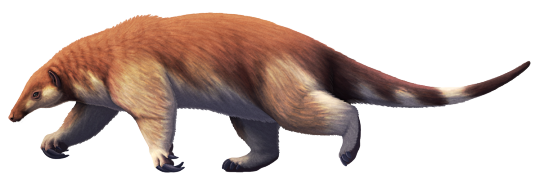
Eurotamandua joresi lived during the mid-Eocene, about 47 million years ago, in the lush subtropical forests that covered what is now central Germany.
When it was first described in the early 1980s it was classified as an anteater due to its close resemblance to some modern species… but there were big problems with this interpretation. Anteaters have a sparse fossil record, but they're known to have originated during the early Eocene in the isolated island continent of South America – so Eurotamandua's ancestors making it all the way to Europe within just a few million years would be pretty remarkable!
Also, on closer inspection it didn't have the distinctive skeletal features of a xenarthran mammal, suggesting it wasn't an anteater after all.
Instead more recent studies have identified it as a close relative of pangolins, part of an early branch of the group that didn't have the characteristic large scales.
About 90cm long (~3'), Eurotamandua would have a lifestyle much like the anteaters it convergently resembled, using its large claws to rip open ant nests and a long sticky tongue to feed.
———
NixIllustration.com | Tumblr | Patreon
438 notes
·
View notes
Text
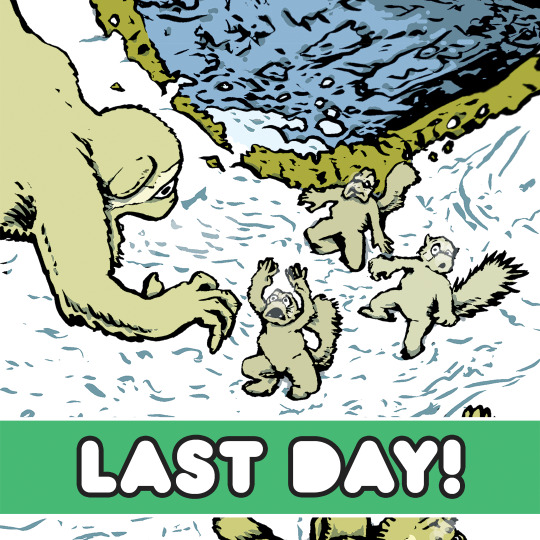
Last day! Back the new prehistoric comic book PALEOCENE #4 while you can!
https://www.kickstarter.com/projects/keesey/paleocene-4-comic-book
8 notes
·
View notes
Text
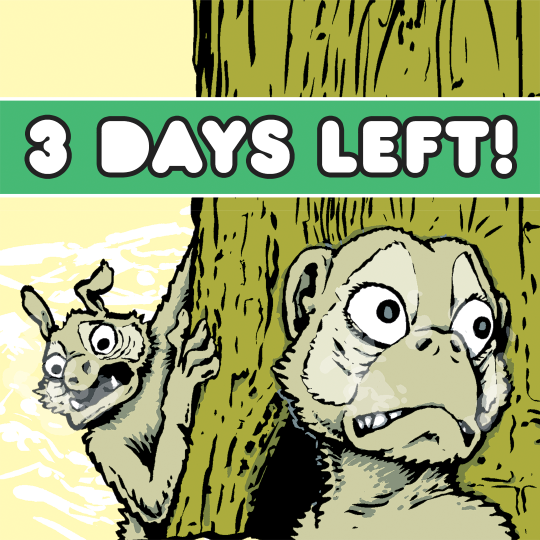
The end is coming! Only three days left to back the next issue of PALEOCENE, the comic book series about our tiny, primate ancestors 66 million years ago, who survived the extinction that ended the reign of the dinosaurs.
https://www.kickstarter.com/projects/keesey/paleocene-4-comic-book
kickstarter
kickstarter
51 notes
·
View notes
Text
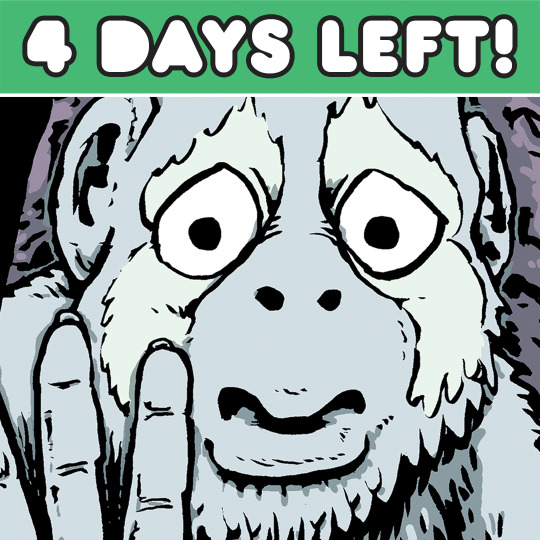
It’s going away soon! Four days left to back the latest issue of PALEOCENE, a comic book series about our ancestors who survived the asteroid impact that ended the Age of Dinosaurs. https://www.kickstarter.com/projects/keesey/paleocene-4-comic-book
kickstarter
11 notes
·
View notes
Text
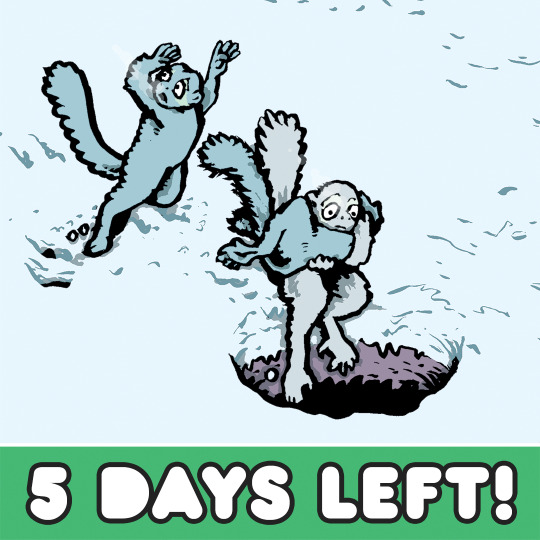
Only 5 days left to back the latest issue of PALEOCENE, a comic book series about our tiny primate ancestors who survived the asteroid impact that ended the Age of Dinosaurs.
Check it out: https://www.kickstarter.com/projects/keesey/paleocene-4-comic-book
kickstarter
23 notes
·
View notes
Text
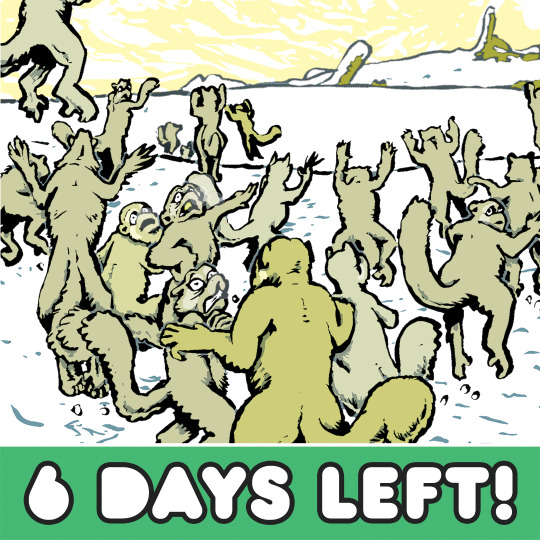
Only six days left to back the latest issue of the prehistoric, post-apocalyptic comic book series, PALEOCENE. Hurry! https://www.kickstarter.com/projects/keesey/paleocene-4-comic-book
kickstarter
9 notes
·
View notes
Text
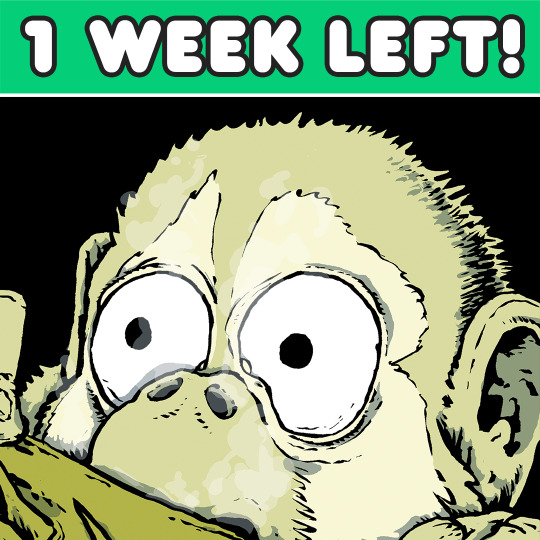
Only one week left in the campaign for the fourth issue of Paleocene. Check it out: https://www.kickstarter.com/projects/keesey/paleocene-4-comic-book
kickstarter
41 notes
·
View notes
Text

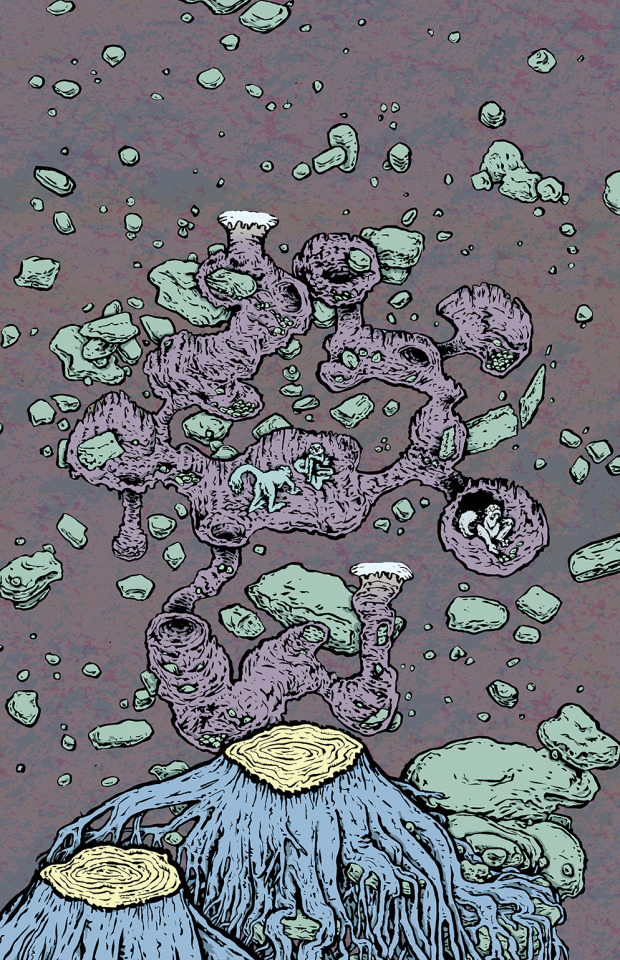
Prehistoric snowscape and cutaway underground view, showing early primates in a complex burrow dug by another mammal. This is the back cover and final page of my new comic book, Paleocene #4. If you like it, please consider supporting the Kickstarter campaign to get it printed.
55 notes
·
View notes
Text
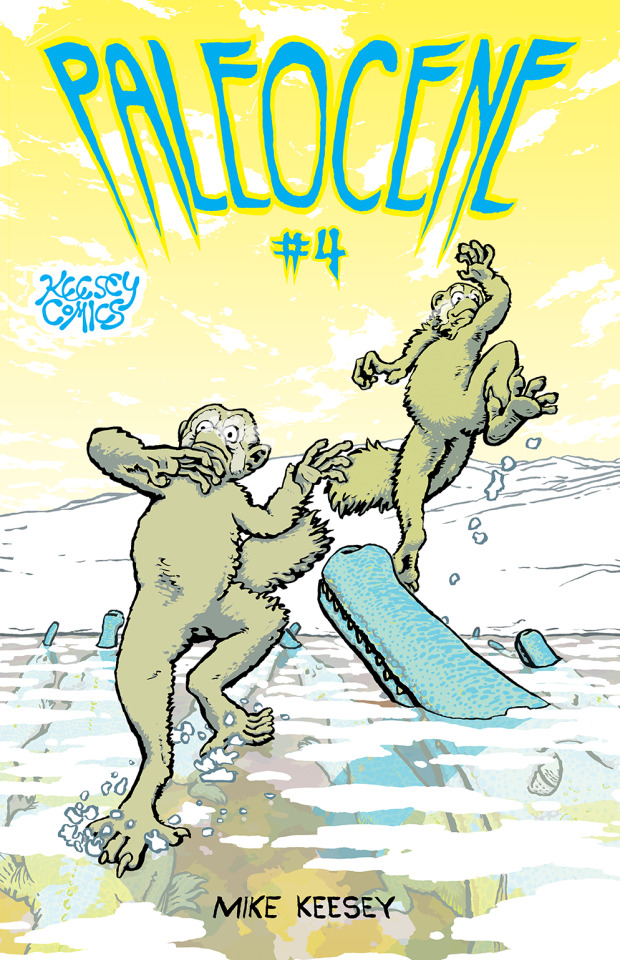
The front cover for my upcoming comic book, Paleocene #4. Check out the campaign to get it printed!
Sixty-six million years ago, the world ended.
A meteorite over ten kilometers in diameter slammed into the Earth. The explosion released two million times as much energy as the largest nuclear bomb ever detonated. All life in the vicinity was instantly obliterated.

For the rest of the world, death was slower. A shroud of soot and dust engulfed the Earth. Without sunlight, plants withered and died, setting off a domino effect up the food chain, all the way to mighty predators like Tyrannosaurus rex. Three quarters of all life on Earth perished, starving in the darkness.
But we survived.
Not “we” as in humankind. This was much earlier. But our early primate ancestors—they persisted. With clutched hands and shining eyes, they witnessed the end of the world … and the early dawn of a new one.

What's in the new issue?
After witnessing a predatory bird devour their fellow troop member, Mamma and Brother continue their search for Sister … now in the freezing cold of winter.
Could the little child possibly have survived? What will happen to Auntie and the rest of the troop in their absence? And, as Brother grows up, will he stay with his Mamma?
If you've been following the story so far, you'll definitely want to read this one, because, I promise, you will finally discover Sister's fate!
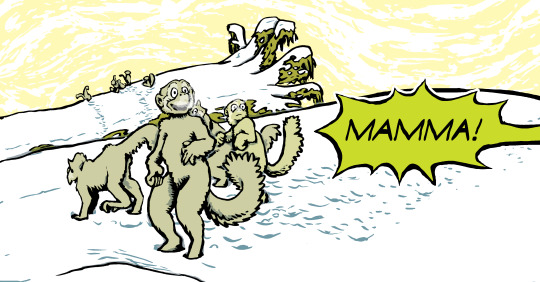
145 notes
·
View notes
Note
What color are orcas' eyes?
In short, mostly brown. In long, it's a bit complicated as Killer whales (and for that matter, all cetaceans) have multi coloured eyes! Unlike us humans, who have a singular coloured iris and a white sclera, cetacean eyes come in more flavours. Their iris is circled by a pale ring of varying colour, and the surrounding sclera is more often than not coloured too, sometimes even bi-colored. I have actually been working on a cetacean eye-colour-chart thing so I have some neat illustrations ready.
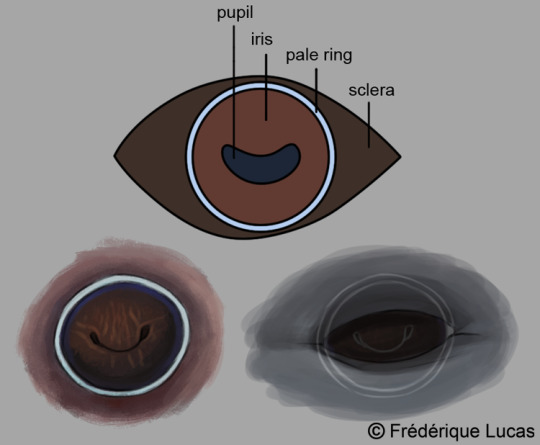
Here you can see the components that make up a cetacean's eye. It should be noted though that when relaxed, the eyelids cover much of it, leaving almost only the iris visible. As an example: a Harbour porpoise (Phocoena phocoena). On the left a clear view of the eye in its totality; on the right as visible in life.
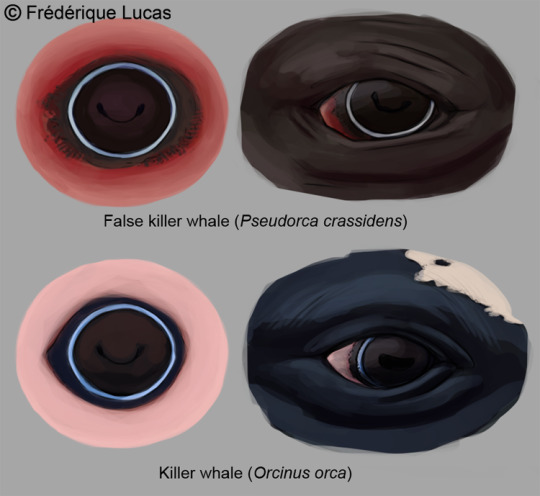
Onto the whale in question. All cetaceans have beautiful brown irises: in many it is an unbelievably rich reddish hue when sunlight hits it directly. In shadow or underwater it looks more subdued though. Then comes the pale ring which in Killer whales is quite variable: in some animals it is very pale, almost white, while others have beautiful bright blue rings. The sclera appears two-toned in blackfish as far as I've seen. Killer whales have a rather modest dark brown area of sclera around the iris-pale-ring-combo, with the surrounding "base" sclera reddish pink. For comparison, False killer whales (Pseudorca crassidens) have a bit more substantive dark brown sclera area, with the surrounding sclera a striking bright red.
I hope this answers your question! This makes me want to finish this chart haha so maybe that'll come soon-ish in its totality.
2K notes
·
View notes
Text
It Came From The Wastebasket #01: Is This An Insectivore?
Most of the wastebasket taxa featured this month are completely extinct and known only from fossils, but to start things off let's take a look at a major example of how even groups with living members could have their classification muddled up for centuries.
———
The name Insectivora first came into use in the early 1820s, and was used to refer to various "primitive-looking" small insect-eating mammals, with modern shrews, moles, hedgehogs, tenrecs, and golden moles as the original core members.
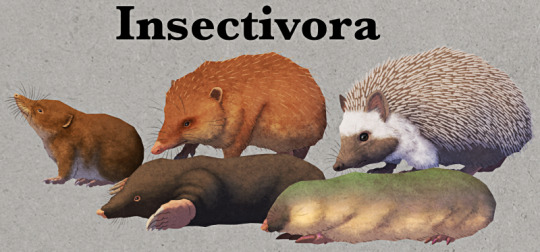
Then over the next few decades solenodons, treeshrews, sengis, and colugos all got lumped in with them too.
By the early 20th century insectivorans were considered to represent the "primitive" ancestral stock that all other placental mammals had ultimately descended from, and any vaguely similar fossil species also got dumped under the label. Extinct groups like leptictids, cimolestans, adapisoriculids, and apatemyids all went into the increasingly bloated Insectivora, too, making the situation even more of a wastebasket as time went on.
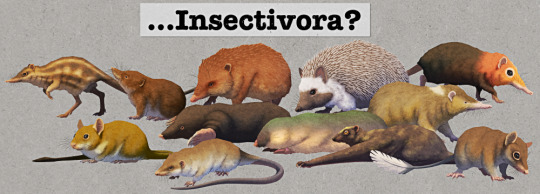
The problem was that the only characteristics that really united these various animals were very generic "early placental mammal" traits – small body size, five clawed digits on the hands and feet, relatively unspecialized teeth, and mostly-insectivorous diets – and attempts at making sense of their evolutionary relationships were increasingly convoluted.
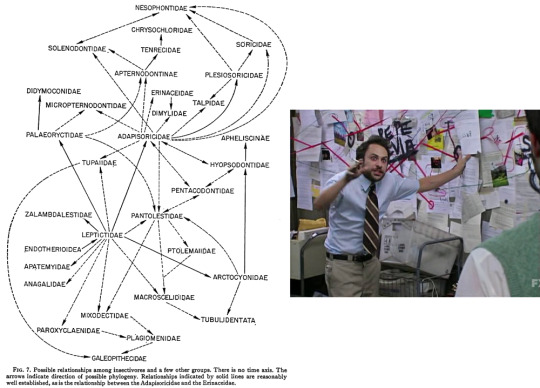
(Image sources: http://hdl.handle.net/2246/358 & https://knowyourmeme.com/memes/pepe-silvia)
The rise of cladistic methods from the 1970s onwards resulted in a lot of "insectivores" finally being recognized as unrelated to each other, removing them from the group and paring things back down closer to the name's original definition. The idea that insectivorans were ancestral to all other placentals was abandoned, instead reclassifying them as being related to carnivorans, and the remaining members were recognized as just retaining a superficially "primitive" mammalian body plan.
Just shrews, moles, hedgehogs, solenodons, tenrecs, and golden moles were left, and to disassociate from the massive mess that had been Insectivora this version of the group was instead now called Lipotyphla.
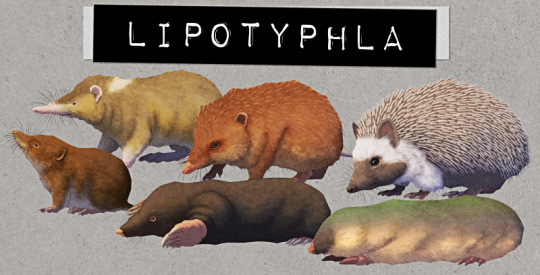
But there were still no unique anatomical links between the remaining lipotyphlans. And then once genetic methods became available in the late 1990s, something unexpected happened.
Studies began to suggest that tenrecs and golden moles were actually part of a completely different lineage of placental mammals, the newly-recognized afrotheres, with their closest relatives being sengis and aardvarks. Meanwhile the rest of the lipotyphlans were laurasiatheres, closely related to bats, ungulates, and carnivorans.
Lipotyphla was suddenly split in half. For a while it was unclear if even the remaining shrew-mole-hedgehog-solenodon group was still valid – hedgehogs' relationships were especially unstable in some studies – but by the mid-2000s things began to settle down into their current state.
Finally, after almost 200 years of confusion, the insectivore wastebasket has (hopefully) now been cleaned up. The remaining "true lipotyphlans" do seem to all be part of a single lineage, united by their genetics rather than by anatomical features, and are now known as Eulipotyphla.
A few fossil groups like nyctitheriids and amphilemurids are generally also still included, but since this classification is based just on their anatomy it isn't entirely certain. The only exception to this are the nesophontids, which went extinct recently enough that we've actually recovered ancient DNA from them and confirmed they were eulipotyphlans closely related to solenodons.
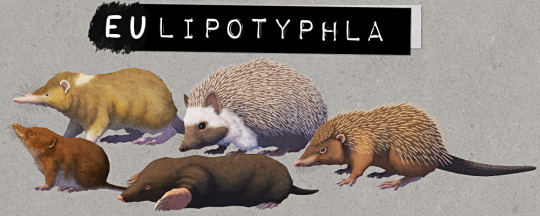
———
Nix Illustration | Tumblr | Twitter | Patreon
Bonus species IDs under the cut:
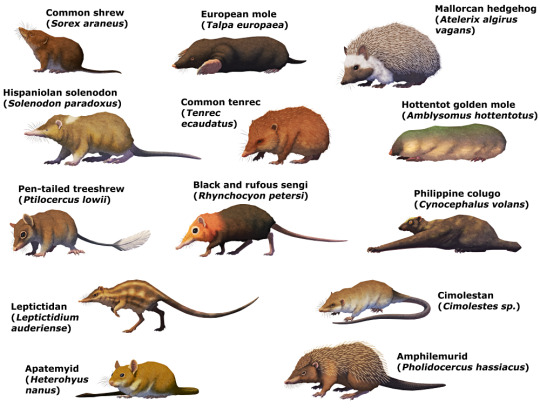
394 notes
·
View notes
Photo
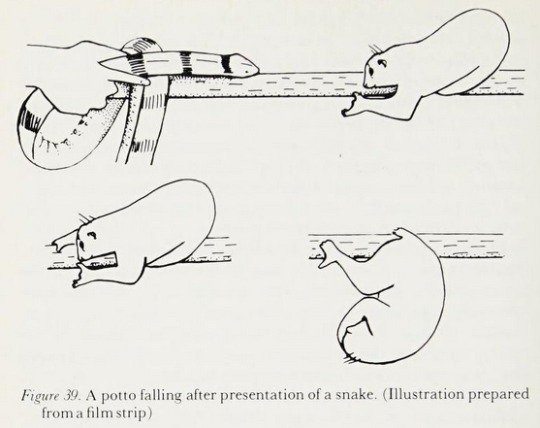
[A potto falling after presentation of a snake.]
Charles-Dominique (1977)
443 notes
·
View notes
Photo
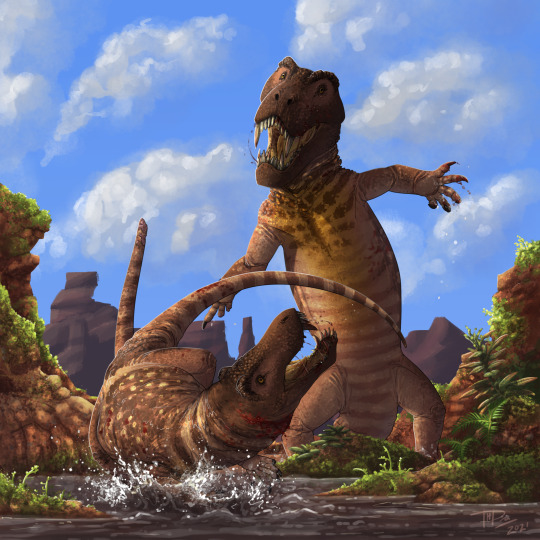
Two subadult Titanophponeus have come to blows over territory in the Middle Permian of what will one day be Russia. These two young synapsids are just beginning to claim and hold territories of their own, and will fiercely defend any small area that they’ve claimed as their own. Juveniles are reckless and energetic, and disputes between them often turn ugly, but these same youngsters would never dare pick a fight with a fully-grown Titanophoneus.
934 notes
·
View notes